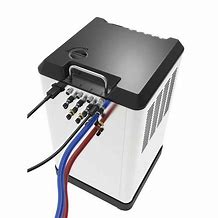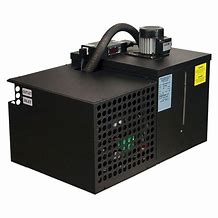A glycol chiller is a chilling system that generates extremely low temperatures well below the freezing point of water by using a portion of glycol combined with water. Either propylene glycol or ethylene glycol is the basis of the two different types of glycol. To achieve its low cooling thresholds, the coolant must be in a fluid phase due to glycol’s antifreeze properties. The majority of chiller units combine ethylene or propylene glycol with water at a 60 to 40 percent ratio.
TYPES OF GLYCOL:
Ethylene (EG) Glycol
A rust inhibitor and antifreeze, EG is utilized in industrial cooling systems to prevent freezing. The lowest outdoor ambient temperature and the temperature of the application loop are used to calculate the amount of EG to utilize in a mixture of glycol and water. Because of its high flashpoint of 240o F, EG is used in industrial applications with chillers. EG is not permitted for use in the processing of food due to its toxicity.
Propylene (PG) Glycol
PG is a food-grade antifreeze with low toxicity. It is biodegradable and safer than EG. In refrigeration systems or the food sector, where it may come into contact with people, propylene chillers are employed. Despite being a synthetic liquid, propylene is quickly absorbed by water. PG has been designated as safe by the Food and Drug Administration and can be used to retain water and maintain moist control for foods, cosmetics, and medications.
TYPES OF GLYCOL-CHILLER
- Portable chillers – all-inclusive units that are modest, self-contained, and small.
- Modular Glycol chillers – adaptable and allows for the addition of additional chillers as necessary.
Over the years, cooling systems have significantly improved by eliminating outdated and harmful cooling methods. The chiller manufacturing industry has become more environmentally conscious and developed cooling solutions that are compliant with environmental agency requirements.
To purchase best Eco-Friendly chillers… Check it out Coolfab Equipments

